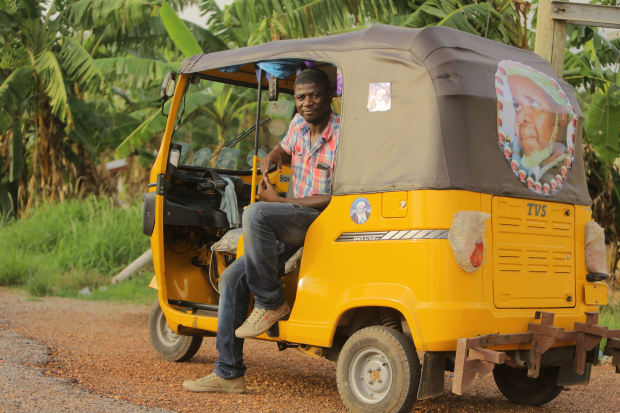The importance of Cities in the Green Transition
Discussion details
Cities represent almost half of the world’s population and two-thirds of the global GDP1. The continuing rapid urbanisation in many EU partner countries is one of the most visible megatrends of the 21st century. According to estimations, up to two billion more citizens will reside in urban areas by 2050, mostly in Sub-Saharan Africa and Asia.

How countries, cities and the international community respond to these developments will be paramount to delivering on the Green Deal, as challenges and opportunities are increasingly concentrated in urban areas. For example, 70% of CO2 emissions originate from cities, and their constant expansion puts them at risk from rising sea levels and other climate change-related issues. Failing to act prior to the surge in urbanisation risks greatly increasing costs and negatively affecting prospects for sustainability, inclusiveness and prosperity.2
The work on Green Cities is related to the Sustainable Development Goal 11 (SDG11: Sustainable cities and communities), and has given rise to initiatives such as the Global Covenant of Mayors for Climate Change & Energy. “Greening the cities” is a multidimensional concept and touches upon multiple aspects including cutting down on waste and pollution, restraining urban sprawl, increasing the environmental performance and managing the use of resources more efficiently, with the use of technological innovation and creativity.
Against this backdrop, the MKS Programme3 – which is managed by INTPA.D4 – organised the webinar Green & Sustainable Cities on 23 November 2021, in partnership with DG INTPA units F4, F2 and F1. The webinar focused on two components of sustainable urban development: mobility and waste management; with two case studies from Latin America and Africa, presented below.
Green urban mobility: the case of Mexico

In Mexico City, 10 million trips a day take place in an unsafe, uncomfortable and unreliable transportation system. The city’s public transport consists of public monopolies (i.e. metro, Sistema de transportes eléctricos - trolleybuses), concessions (i.e. metro buses, well-regulated concessions such as sistemas de buses conseniados and passive concessions like vans and microbuses) and deregulated transport means (i.e. taxis, moto taxis, bike taxis). The concession model appears to be quite problematic as the transport units are small, highly contaminated, uncomfortable and unsafe, and most of them are in need of upgrading. There is also a lack of control, and the business scheme is highly atomized. In addition, drivers in this model are very powerful and reject any type of formalisation.

A comprehensive programme to improve public concession transport is in place to a) improve users’ travel experience; b) dignify, professionalise and give certainty to the driver; and, c) improve the operation of the system. To tackle the resistance shown by drivers, the programme gives incentives such as fuel bonuses, health insurance for drivers and family, unit replacement opportunities as well as technical and economic assistance. In return, drivers are obliged to install Global Positioning Systems (GPS), panic buttons and cameras in their units. Moreover, they have to drive safely, provide vehicles that are more comfortable, treat users well and operate a minimum number of hours.
Sustainable urban development and waste management: the case of the Republic of Guinea
Solid waste management (SWM) is part of the transition to a green economy. As a sector, it has high potential not only in the areas of job creation and private sector involvement via the collection service, but also in the circular economy and recycling. SWM is a challenge for the Republic of Guinea – and Sub-Saharan Africa in general – as waste generation is expected to increase sharply with repercussions on health and the environment, among others. Waste recycling is poorly developed in Africa (6% compared to 30% in OECD countries), and the management of municipal solid waste generates significant costs. According to the World Bank, it represents about 20% of the local government budget in low-income countries, about 10% in middle-income countries and 4% in high-income countries.

The EU works closely with the Republic of Guinea and has supported the intervention SANITA (“Programme de développement urbain et d’assainissement en Guinée”). SANITA has two phases and is implemented by Enabel (SANITA Villes Propres I4 and SANITA Villes Propres II5), UN Habitat (SANITA Villes Durables6) and Agence Française de Développement (SANITA II – Centre d’enfouissement technique). It is based on the country’s National Development Plan and on the urban development strategy ''Grand Conakry Vision 2040'' – also supported by the EU – and on the “Strategy of waste management professionalisation of the City of Conakry 2019-2029”. The programme addresses the entire waste management chain.
In Conakry, the pre-collection sector employs more than 1,500 people with a collection rate of less than 20%. SANITA will help to develop more than 5,000 additional jobs. Moreover, 30 SMEs are being trained in environmental and entrepreneurial management, and a new umbrella organisation for SMEs was created in early 2021. Main challenges to the programme include political instability and interference, and the difficulty of securing land – especially for the waste transfer stations.
Are you working on interventions related to green urban mobility and/or waste management?
Do you have good practices to share?
Add your input in the comments below!
Resources
- Tools and Methods Series - Guidelines n°6 - Guidelines on the Integration of Environment and Climate Change into EU international cooperation and development
- Capacity4dev Group Discussion – Quick tips guide on green cities
- Study by the Covenant of Mayors in Sub-Saharan Africa (CoM SSA) – Finance Roadmaps for Climate Projects: How can local governments in Sub-Saharan Africa facilitate access to finance?
- Publication by the World Bank Group – What a Waste 2.0 : A Global Snapshot of Solid Waste Management to 2050
About the Green & Sustainable Cities webinar
The specific objectives of this Green & Sustainable Cities webinar were for the participants to gain insight into:
- why cities are fundamental to achieving the Green Deal goals;
- how Green Deal main priority areas can be delivered through sustainable urban development and implications for EU cooperation;
- what are the specific challenges urban areas are facing in partner countries and how the concept of green cities can appeal to decision-makers;
- the entry points, opportunities, challenges and key tools for integrating environment, biodiversity, climate change and disaster risk reduction in urban development in partner countries – with particular focus on programming for 2021-2027.
1 Gross Domestic Product.
2 The EU Member States adopted the New Leipzig Charter in Nov 2020 which sets out policy framework for the role and contribution of cities to, amongst others, the European Green Deal. The New Leipzig Charter highlights the transformative power of cities, advancing a vision of Green, Just and Productive Cities through integrated urban development.
3 ''Methodological and Knowledge Sharing Support for EU External Interventions" programme.
4 The focus is on structuring of waste management in Conakry and infrastructure.
5 This includes the expansion of SANITA Villes Propres I to sub-urban communes.
6 The focus is on strengthening urban planning capacity.

Log in with your EU Login account to post or comment on the platform.